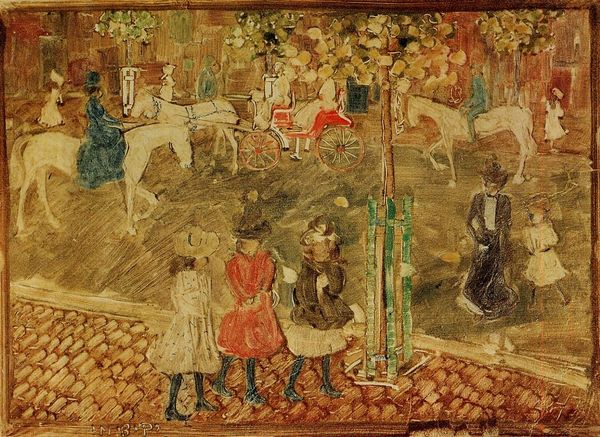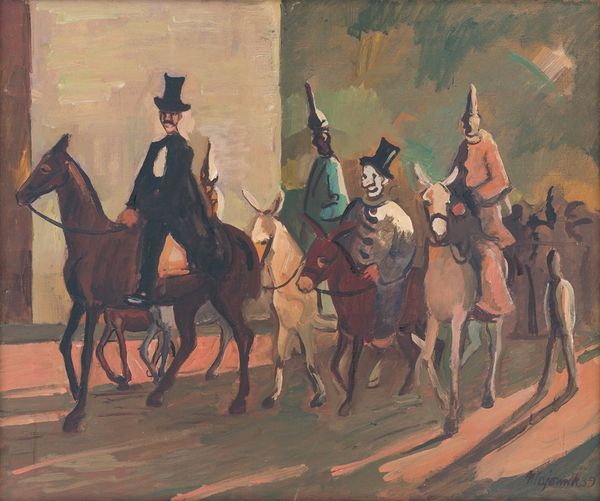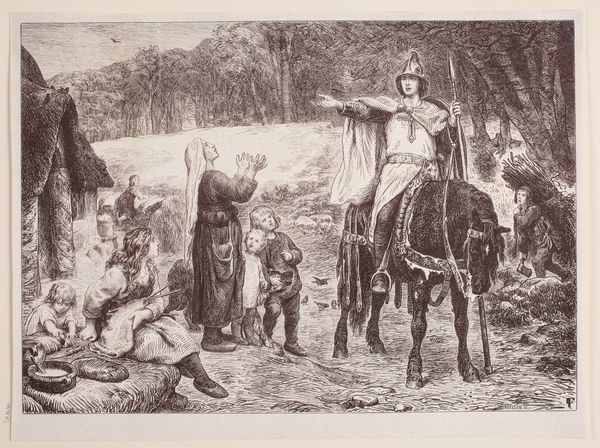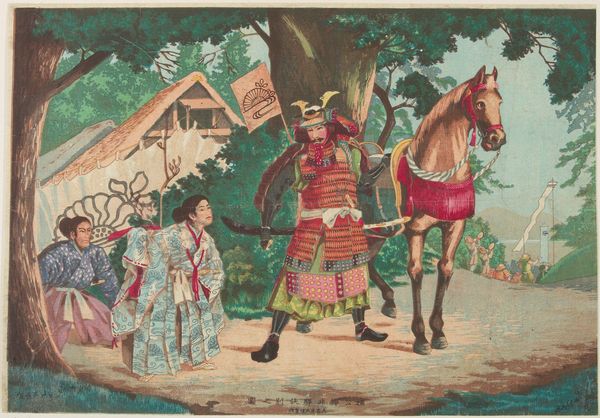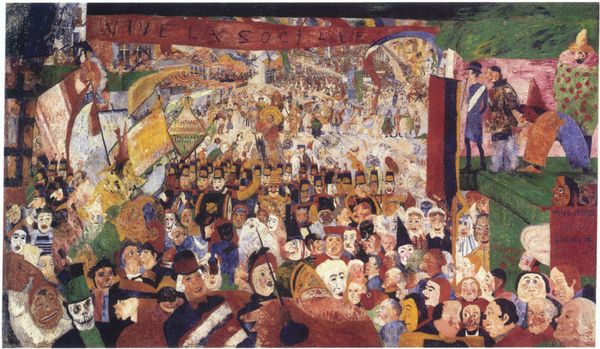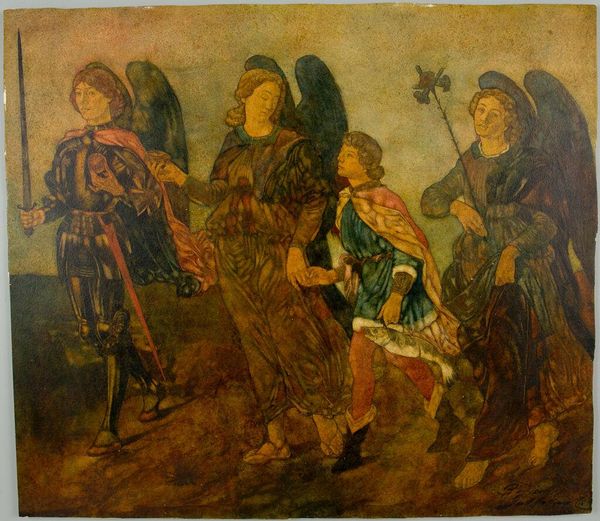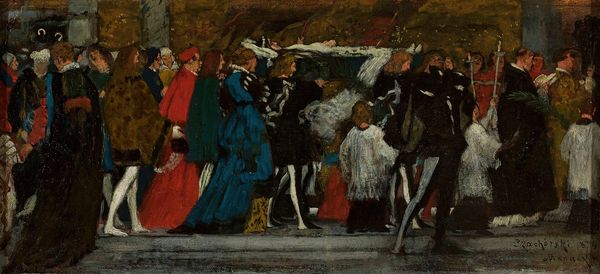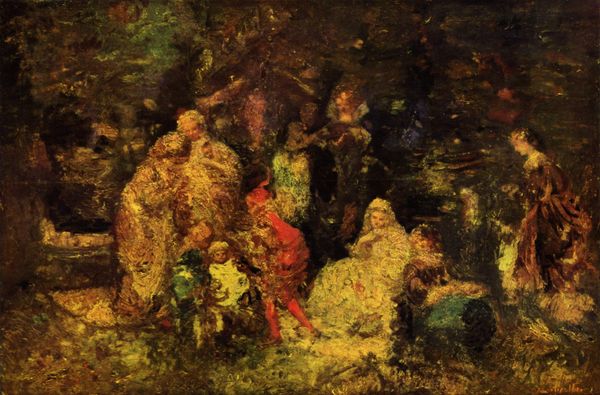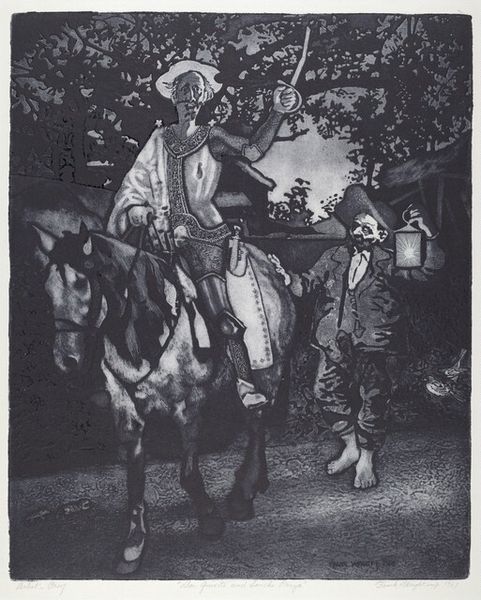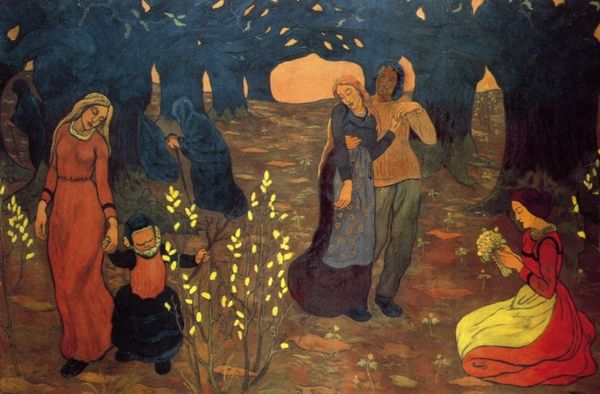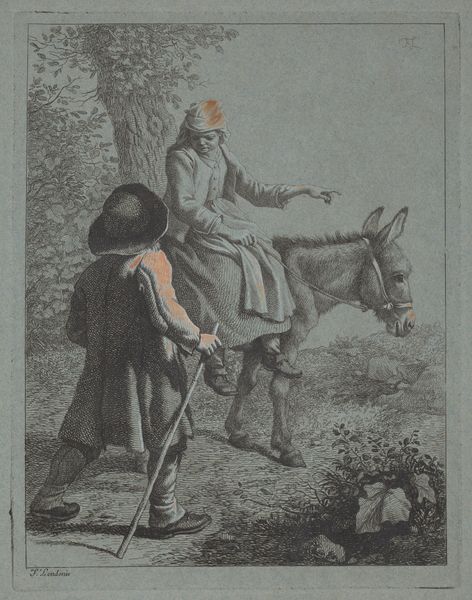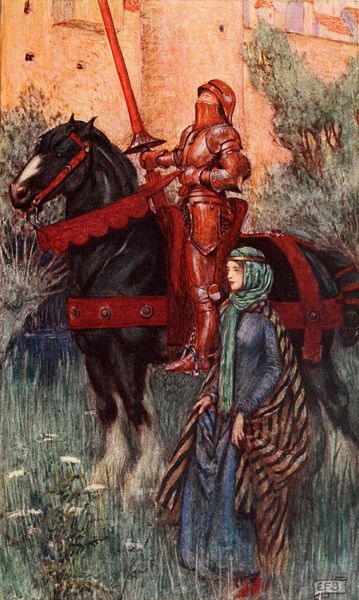
Copyright: Public domain
Theodor Kittelsen conjured "Askeladdens Adventure" sometime around 1900, I don't know what it's made with, but it looks like watercolor and ink on paper. Look at how Kittelsen uses these slightly muted colors to create this fantastical, almost dreamlike quality, which really highlights the way process can shape meaning. The texture here, achieved through delicate washes and fine lines, feels almost like a memory, hazy and slightly out of reach. The way he renders the figures, especially the face of the fiddler in the foreground, with such intricate detail amidst the softer, more fluid backgrounds, pulls you in. It’s like he's inviting you to lean in and listen to the story, to catch the melody of this peculiar procession. Kittelsen's work reminds me a bit of Paula Modersohn-Becker, but with a touch more whimsy and darkness. Both artists, though, share this incredible ability to create worlds that feel both familiar and utterly strange. It's this tension, I think, that makes art so endlessly fascinating.
Comments
No comments
Be the first to comment and join the conversation on the ultimate creative platform.
